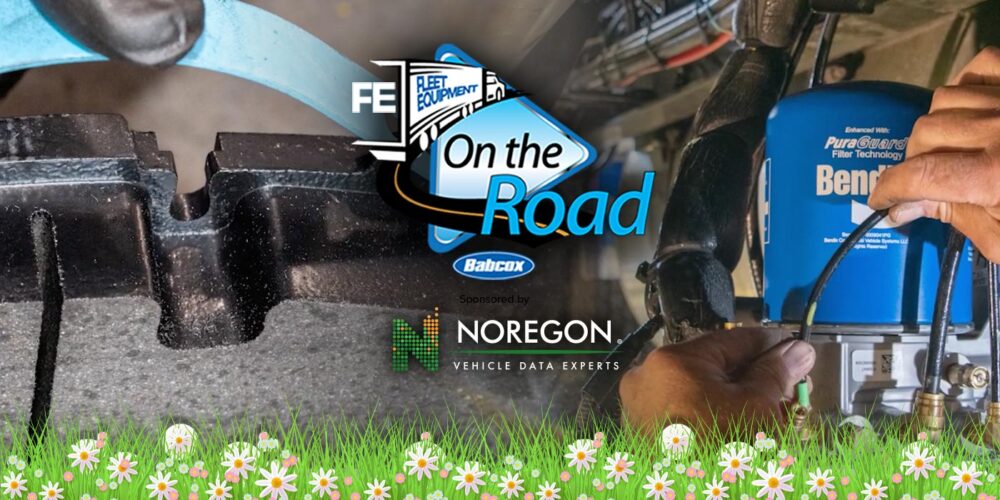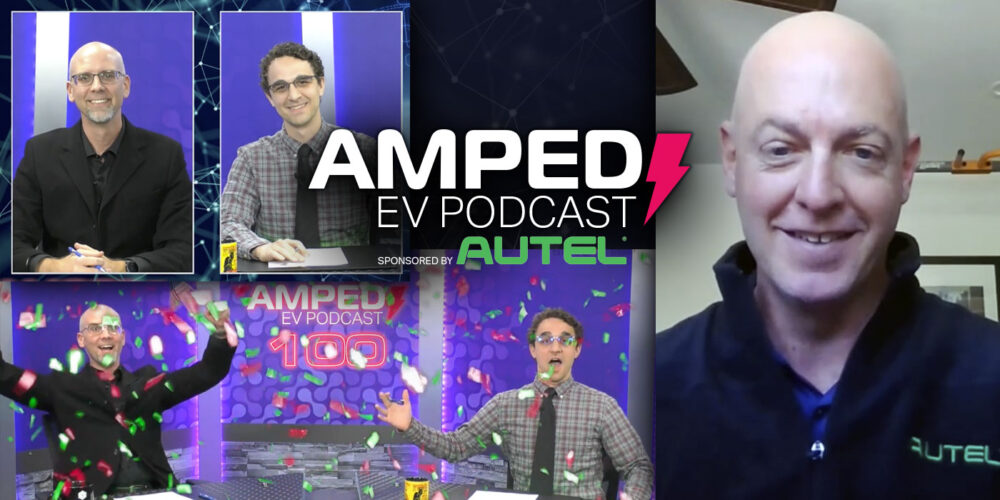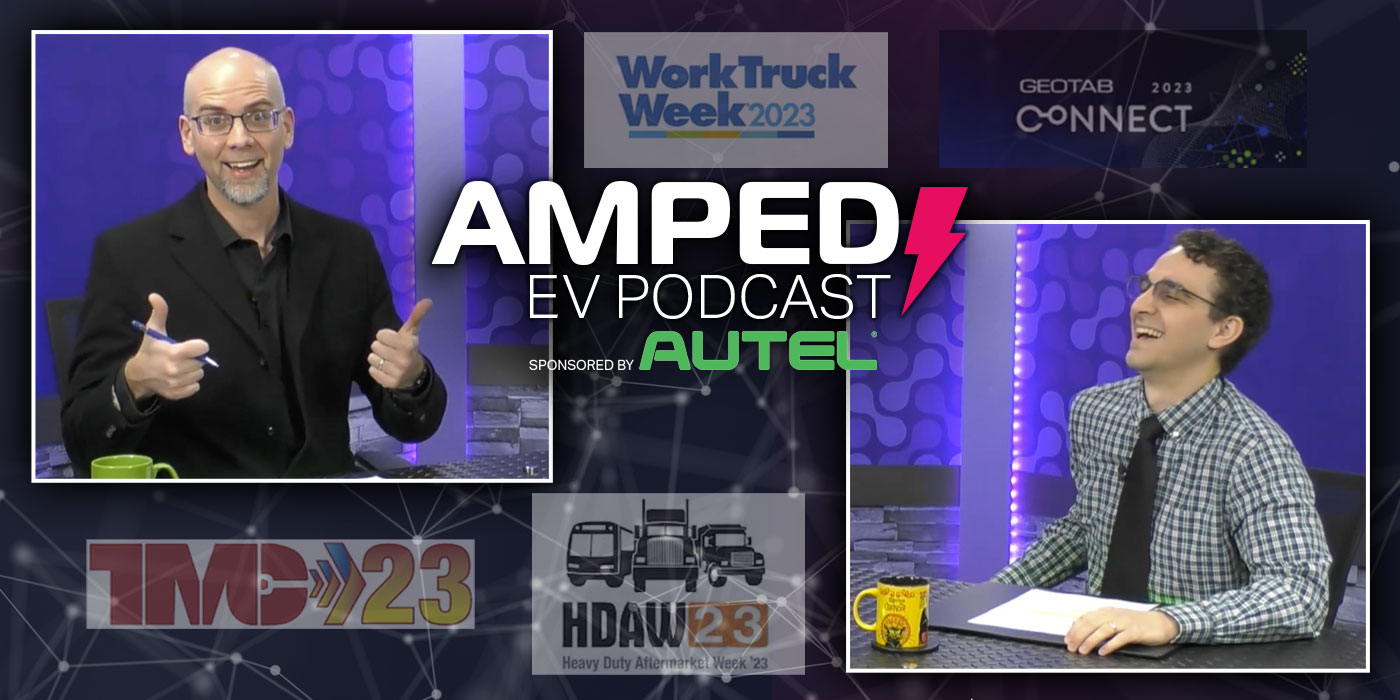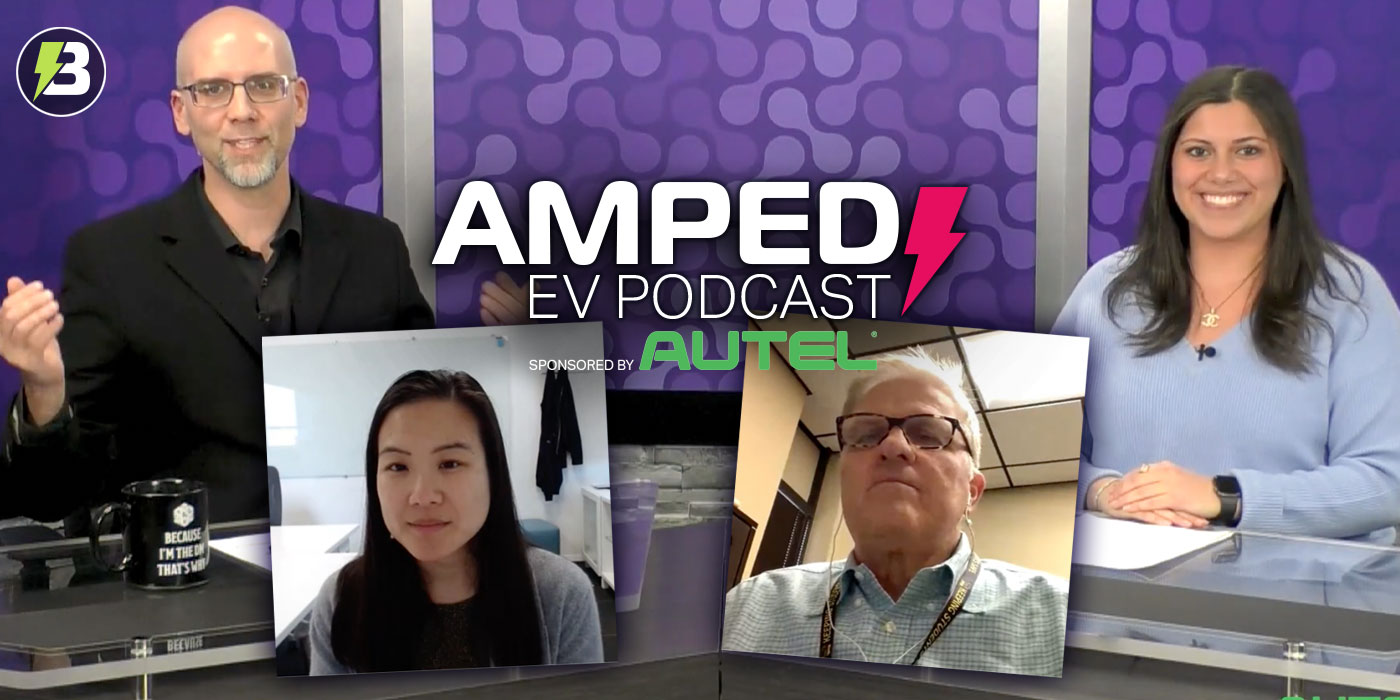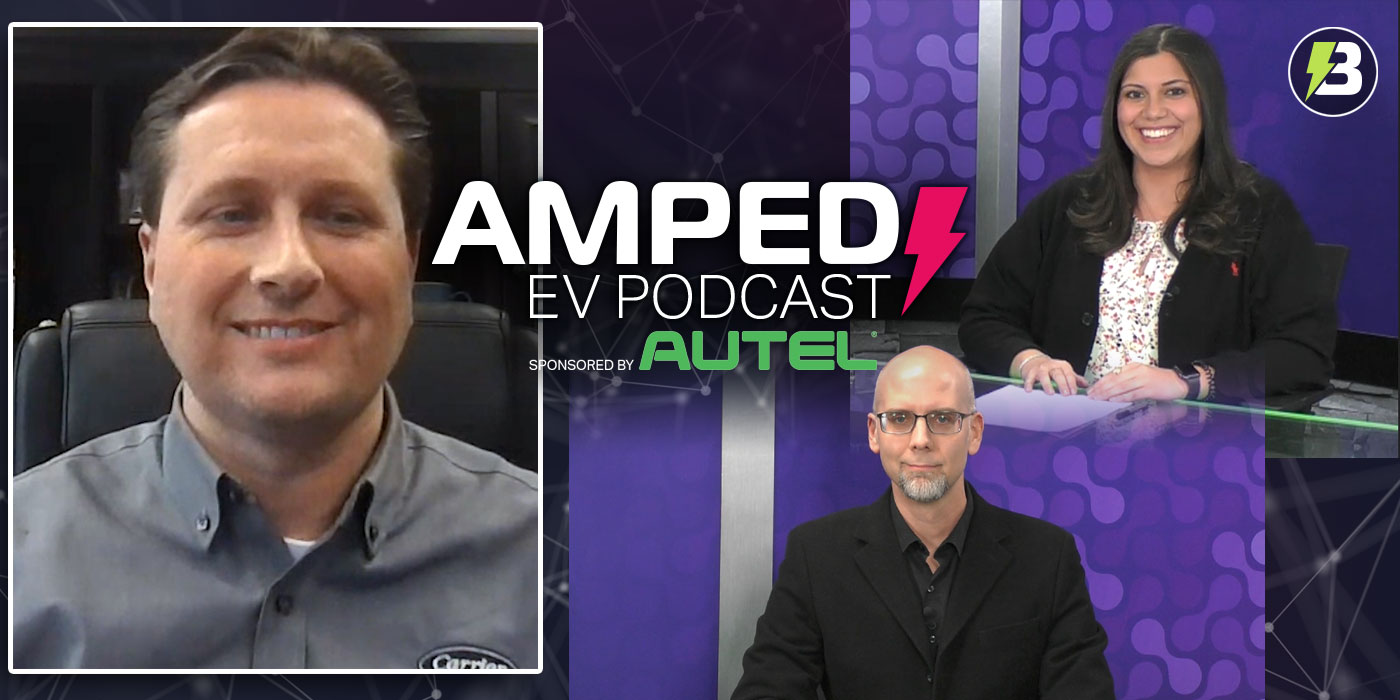When it was passed last year, the Infrastructure Investment and Jobs Act carved out $7.5 billion to create a nationwide charging network. The plan outlined at least 500,000 EV charging stations strategically located throughout the nation, particularly along highway corridors, that can help with long-distance EV travel—as well as for local EV charging. To give that some perspective, from an automotive standpoint, there are 150,000 fueling stations across the United States. That’s a lot of charging stations.
So where will we start seeing money flowing into charging infrastructure development? The Buzz Editor David Sickels and I put that question (and a few others) to ACERTUS CEO Trent Broberg. Broberg had penned an article for FE in January that talked about the infrastructure act overall, but now we dive into the EV specifics. Watch the video above for his thoughts on where we’ll start seeing investments.
More invigorating infrastructure talk
Sir Sickels and I have been pounding the virtual pavement to talk about the challenges of infrastructure development. Check out a few of our other conversations below.
Here’s a transcript
David Sickels:
Hello, and welcome back to the Amped EV podcast. I am David Sickels. I am the editor for The Buzz.
Jason Morgan:
And I am Jason Morgan, content director for Fleet Equipment.
David Sickels:
So Jason, I’m excited about this episode today. I’ve been thinking a lot about getting my own electric car. And, with the infrastructure bill, everything going through, electric cars are obviously a big thing right now. Chances are, when I get that electric car, if and when I get that electric car, it’s going to be delivered to me.
Jason Morgan:
Oh really? Like on a truck?
David Sickels:
Mostly.
Jason Morgan:
That will just pull up?
David Sickels:
Probably.
Jason Morgan:
And drop it off in your driveway.
David Sickels:
I mean, if all things go well, that is the plan.
Jason Morgan:
Interesting.
David Sickels:
And with that being said, I thought it would be a good idea to talk to an expert in this space who can not only talk about transportation of EVs, storing EVs, all of that kind of thing, but he can also talk a lot about the infrastructure bill, and what that means for me, what that means for fleets, and so on.
Jason Morgan:
Okay.
David Sickels:
So today our guest is Trent Broberg. He is the CEO of ACERTUS, and Trent, it’s great to have you on the show.
David Sickels:
Trent, thank you so much for joining us today. Can you just kind of lay the groundwork as far as what ACERTUS is, and what you do?
Trent Broberg:
Yeah, thanks, and thanks for having me. I appreciate what you guys have done here to inform obviously the consumers and the businesses out there on the changing behaviors of the EV market. ACERTUS is a finished vehicle logistics platform. What we do is we make the complex logistics of finished vehicles easy. We’ve got a platform that we service, middle mile, long haul, final mile pickup and deliveries from consumers or businesses, and a network of 55 facilities across the US where we do storage, light recon, EV charging, of the like, and many others. That’s what services our hub and spoke model for our home pickup and delivery services. And one of our other major divisions is obviously title and registrations, is that we can title and register vehicles in transit.
David Sickels:
Excellent. And so, from that kind of automotive logistics standpoint, why would you say that now is a good time for fleets to start investing in electric?
Trent Broberg:
Yeah, it’s a great question. I think, and I actually get this question frequently. There’s plus and minuses to everything. I think right now we recognize, that we probably didn’t recognize three to five years ago, that EVs are here to stay. Sometimes they make sense financially at this point in time, but as scale happens, so do economies, and they get better for fleets overall. So understanding your network optimization for the fleets is the most critical point here in understanding how far, what the EV battery life needs to look like, how you’re going to charge them, where they’re going to run, the behaviors associated to that, but they’re here to stay. And obviously as we continue to press in a reduction of carbon footprint, there’s tax incentives associated to it, many other pros, I think, that will continue to evolve over time. But I think now is obviously a great time as any to start the investments, obviously not turn over your whole fleet because there’s obviously risk associated to that, but it’s here to stay, and it will continue to grow.
Jason Morgan:
Right. For sure. Trent, you penned a great article for us recently about the infrastructure bill and how that can help EVs along. I wanted to follow up on that real quick, just to get kind of your personal take on what were some of the welcome additions from the logistics point of view that you saw in the bill, and where do you think the bill falls shorter, or what did you want to see more of that maybe we didn’t see?
Trent Broberg:
First and foremost, being a lifelong logistician here in freight and automotive, I welcome the infrastructure bill and many components of it. I think we’ve been remiss at investing in our infrastructure here, for most importantly, the driver community out there that are actually doing the hard work for those of us, obviously, behind the podcast here. So when I look at it, obviously they’ve earmarked seven and a half billion set aside to create the network, the infrastructure, the first and foremost challenge for EVs out there and the adoption of EVs, whether you’re a consumer or business, whether you are looking for a small F-150, to an Amazon delivery van, or a Class 8 truck, the infrastructure is always the biggest challenge here. How do we charge it? Where are the chargers? And how often can I charge, or do I need to charge? As well as the complexities of the actual charger themselves. Well, is that a charger that my vehicle that I’m driving can actually utilize?
Trent Broberg:
So that’s the biggest opportunity we’ve got out there. I think that will continue to fall short of consumer and business expectations, because I think the purchasing behaviors and the advancement of the innovations on EVs will outpace the infrastructure and will continue to do so. So we’ve got to continue to invest in that. And that’s true in obviously the motoring highways, but also our neighborhoods. When you start thinking of the draw that EVs will take to charge, some of our day-to-day infrastructure within our neighborhoods are going to be challenged.
Trent Broberg:
I think obviously the stated goals there, reducing carbon footprint, expediting EV production and adoption, all fantastic opportunities for the EV market, logistics as a whole, and just, I think the consumer buying behavior. They’ve got an earmark towards 2030 of reducing the greenhouse gas pollutions. I think that it is great for everybody, as long as we can continue to sustain the advancements.
Trent Broberg:
I think that obviously plays into the 500,000 EV chargers that they’re looking to build across the infrastructure. We’ll continue to fall short. If you think you’ve got to charge it once a day, that’s 500,000, there’s going to be a lot more than 500,000 vehicles on the road. In the short term, there already is, obviously, with many of the manufacturers out there. I think maybe some of the $65 billion, if I recall correctly, investment renewable and clean energy on the electricity grid, those are all positive.
Trent Broberg:
Where I think it falls short is on parking. So when I look at just the basics of the infrastructure and how the driving community is out there on the motorways, parking is one of the top three answers, if you were to go out and survey drivers out there, the biggest challenge they’ve got. It’s the biggest waste. One of the biggest wastes, that may be detention, but one of the biggest wastes in their logbooks as well. So you don’t know if you think, you’re a driver out there, you don’t know where you’re going to stop tonight, tomorrow, the next, how do I plan from a parking perspective? When you layer on the need for parking with EV chargers, that creates a huge complex network of parking issues. So that specific component of the infrastructure across the US, I think, is going to be poised for a challenge in the near future.
David Sickels:
No, that makes a lot of sense. And that’s not the first time I’ve heard that. So obviously you are moving, storing a ton of vehicles. You have 55 storage facilities. From your perspective, what is the biggest difference that fleets should be aware of between moving and storing an electric vehicle versus one with an internal combustion engine?
Trent Broberg:
Yeah. Great question. I think I made a list here that I could rattle off, but the first is actually the acquisition of the asset. Understanding the transportation costs and the acquisition of the asset is really important. The load factor, which is a term we use in the industry on how many vehicles we can put on the carrier at any point in time, is greatly reduced because of the overall weight of an electronic vehicle. I’ll give you a comparison. A Tesla Model S, which obviously everybody knows these days, weighs nearly 5,000 pounds, give or take, depending on battery. That’s what we would term on a standard nine-car hauler that you would see out on the highways, that would give you a load factor of seven. So you could fit seven Tesla Model S on a nine car hauler, right?
Trent Broberg:
You’re sub-optimizing initially. That, compared to a similar sized vehicle, and call it a Toyota Avalon, you can fit nine. So that’s a 28% reduction, which means in theory, at 28% increase in your logistics cost. So that’s 25%, it’s a quarter of your logistics cost increase. If you compare that to a Rivian, for example, if you’re buying a fleet of trucks, Rivian compared to, call it a Jeep Gladiator, similarly sized or smaller, F-150, Rivians will weigh 7,000 pounds, almost as much as, if not as much as a dual E, which is a reduction of one load factor, 17%. So that’s important on the overall acquisition of the vehicle.
Trent Broberg:
And then when you start thinking about the inservice of those vehicles, what’s your network optimization look like? Are you running in cold weather or warmer weathers, because that affects your battery life considerably. How are you going to charge these vehicles? Do you have facilities, or do your drivers need to take them to facilities? Right? We’ve invested in EV chargers because some of the customers are asking that rather than take it to their facilities, they want to take it to our facilities to charge these vehicles. It might be an opportunity.
Trent Broberg:
And then another big one that I’ve heard, when you think about the fleets, and your W2 employees or ICs that are actually using these vehicles, are they going to charge them at home or are they going to charge them at the office? And then how is that going to work? Because if you have to charge them, there are a lot of fleets out there where you hand the keys to the employee and then that’s their car, they take it home on a daily basis. Well, if we charge it at home, how are you going to reimburse for the electricity associated to the charging at home? So that’s a big component to think about here.
Trent Broberg:
Parking is another challenge that we already mentioned earlier in the podcast here, but where do we park these vehicles? And if we park them somewhere, can we charge them or should we charge them? There’s a higher upfront cost. Right? I think we were talking a little bit before the podcast here about the upfront cost of vehicles is actually higher. So understanding the acquisition cost here, not just in the logistics spend, but obviously the vehicle itself. And then the typical range anxiety, the issues associated range anxiety, in the infrastructure, where do I charge? How do I charge? What’s the cost of charging compared to, obviously, an internal combustion engine?
Jason Morgan:
So, yeah. And for sure last year, I think, in the commercial world, we took steps to starting to really talk about those in a very real way, getting electric vehicles in the fleets. As that conversation progresses, and we continue to talk about the things you’ve mentioned here, what about on the compliance side, either in how the vehicles are stored or charged or serviced, what are some of the uncommon things that maybe you’ve seen that people need to be aware of involving EV compliance?
Trent Broberg:
Yeah, well, I guess first and foremost, from a compliance perspective, I think of that as even in the broader aspect of fuel tax agreements. So right now we have IFTA out there for fleets, but what is that going to look like as you transition to an EV fleet? So nobody really has an answer for that yet, because it hasn’t been developed yet. But as that progresses, what will that end up looking like for those fleets that choose to go EV, because you won’t obviously be paying at the pump anymore, you’ll have to pay some other way for the infrastructure that you’re driving on.
Trent Broberg:
You know, some of the other challenges, right? You’re looking at some of the capacity issues in the market. So as you’re transporting these vehicles, maybe from one sales rep to another sales rep, or from the OEM to the delivery point, are there carriers out there that can even handle these, these types of vehicles depending on what they are? Because that becomes a big challenge where typically you’ve used maybe a network in the past that can service you on your internal combustion engines. It might not be the same for EVs. And in fact, it’s not the same for EVs in many cases. So that is definitely an opportunity out there to think about as you’re transitioning. And then, like we mentioned earlier, the infrastructure and the charging equipment and the personal chargers, and how will the speed of the charging affect the dynamics of your network.
Trent Broberg:
There are oftentimes people that are what you would term as slip seating, where Jason, you and I might be sharing the same vehicle, and you’re working one shift and I’m working the next shift. We can’t do that, because you’ve got to charge this vehicle. So now you’re not running a vehicle maybe 24 hours, 23 hours a day, you’re running it 12 hours a day. So I think from a compliance perspective, those are opportunities to think about.
Trent Broberg:
And then as I look at more of maybe even another broader aspect of compliance on the positive side, so I’m not glass half empty here, because I do think that there’s a big advantage to going to EVs in your fleet, if it makes sense from a network optimization perspective. You’re reducing your carbon footprint, obviously. If the taxes might be cheaper, it might actually be a better investment. And then right now there’s a ton of tax incentives to do so. Those might be state, municipality, federal tax incentives with some of the new EV manufacturers out there, and new models coming out there. So taking advantage of those tax incentives, $7,500, or who knows what they’re going to be in the future, could really play nicely into the overall acquisition of the vehicle.
David Sickels:
Definitely, definitely. So you’ve talked a lot about some of the different challenges of transporting and storing EVs. How do you, as a logistics company, how do you kind of address some of those challenges?
Trent Broberg:
Yeah. It’s just understanding the need of the customer. So the customer, especially with these fleet individuals, or even end consumers out there, they’re optimizing their network. So how can we then be consultative to them? A lot of these points that we’re using, that we’re leveraging data from our networks and providing that back to the fleets that we service, the consumers that we service, the companies that we service, so they can make intelligent decisions forward. So we are a data provider in many instances, and working alongside a lot of these companies that are looking to transition to EVs, to understand where it makes sense, and how financially it makes sense. The charging capacities, you think about the distance that they’re traveling and optimizing that network. That’s a big opportunity for us to then play a part in educating what we see out there.
Trent Broberg:
And then the capacity that’s needed to haul these. Many people kind of overthink or overlook the weight of these vehicles and the opportunity that exists out there, or the challenge that exists to just move them to from A to B. It’s not the same, right? I mean, it is a vehicle, but it’s not the same because of the weight of these vehicles out there. There’s a huge influx of what you term as hotshot or wedge trailers, where you’ve got somebody with an F-350 and a trailer behind them, and might be able to only haul one of these where previously they were hauling two vehicles. That’s a 50% reduction in the driver’s wages on a daily basis. So we’ve got to compensate for that.
Jason Morgan:
For sure. So to kind of bring us home here, we’ve talked about a lot of stuff. We’ve talked about the challenges of transportation, some of the benefits and advantages here. But from where you sit here for commercial customers that are looking down the barrel of bringing a lot of EVs into their fleet over the next five, 10, even 15 years and beyond, where do we start? What is your take on, how do I start this conversation and take that first step?
Trent Broberg:
It’s just understanding your network, your customers’ needs. We’re all servicing our customers at some point in time. So understanding, we’ve got this term here to service where we use, we are not your customer, or we are not our customer. So it’s really working with your customers to understand and letting them tell you what they need. I think it’s a distance, obviously, opportunity, understanding the temperature requirements or the geographic regions that these would work in. I live in Phoenix, Arizona, and that’s a pretty hot climate, and I’ve just watched some of the football games over the weekend, up in Buffalo or up in Wisconsin, in Minnesota. Those are pretty cold climates, and that got me thinking about this in advantage, because the distance that these vehicles can travel is greatly reduced, or the charging capacity becomes greatly reduced depending on what geographic region you’re in.
Trent Broberg:
So it’s just, and then partnering with, obviously the OEM manufacturers, they’ll tell you what the opportunities exist, and somebody like ACERTUS and having them come in and do some data analysis for you. But that’s, I think, the best opportunity. I would say jump feet first, get some orders in. It’s sure hard to find any OEMs out there, any brand new vehicles out there, but jump feet first, give some a try. I think you’ll be pleasantly surprised, especially from a retention perspective. People that are driving these vehicles really feel connected. And I feel like it’s a real big opportunity for retention where talent is a challenge for everybody these days.
David Sickels:
Perfect. Well, Trent, thanks so much for taking the time today to talk to us. You’ve given me a lot to think about, opened my eyes to a lot. So, really just appreciate the time, and thanks for being on the show.
Trent Broberg:
Yeah. Thank you guys, and be safe out there.
David Sickels:
Thank you. You too.
David Sickels:
Wow. Okay. So, that was a lot. I learned a lot. That’s a lot to take in.
Jason Morgan:
Yeah. I mean, he had a lot of great points. In fact, I am amped about this one. I am amped for people to see it. On a scale of one to amped, how amped are you about this one?
David Sickels:
I’m amped.
Jason Morgan:
Yeah. Yeah, you are. I mean, that was great. One of the interesting things on the commercial side then too, where he is talking about, you’re hauling fewer cars. Does that mean more duty cycles? Are you having to…
David Sickels:
That’s a good point, yeah.
Jason Morgan:
… make an extra delivery a day? What does that mean for the driver? When you talked about charging and slip seating, that’s a great point too, because yeah, you’re not running the vehicle as often as you are in combustion engines. Now, how does that impact duty cycle? I remember even years ago at this point when I was trying to figure out, okay, if I’ve got six trucks, can I get six EVs to do the same workload? And this is a while ago, but my math worked out that I had to have seven trucks to hit the same duty cycles, if I’m running at a certain, just because of the charging nature. And I didn’t want to have to have one that was stuck charging all day. Now you’re adding weight. One of the fun things that I’d like to check into too is, he mentioned that some of the pickup trucks, the weight is now equal to almost a dual. The dual, it’s like, okay, but now we’re talking classes, right?
David Sickels:
Exactly.
Jason Morgan:
Where we get into the weights. Is this going to impact the weight rating of a vehicle? Are you going to get into CDL instances where you weren’t before? So lots to get into here.
David Sickels:
That’s where compliance issues come up, like he was talking about.
Jason Morgan:
For sure.
David Sickels:
Yeah, there’s a lot to think about there. Talking about the infrastructure bill, some of his thoughts there were interesting. The parking issue, as I said, that’s not the first time I’ve heard that concern come up. So it’s going to be interesting to see kind of where that evolves, how things change, and if that really does become the issue that people are worried about, it sounds like it might.
Jason Morgan:
Right. Sounds like we’re going to have a lot to talk about here coming up pretty soon.
David Sickels:
And that is the good news. So stick around for the next episode. Thanks for watching.





